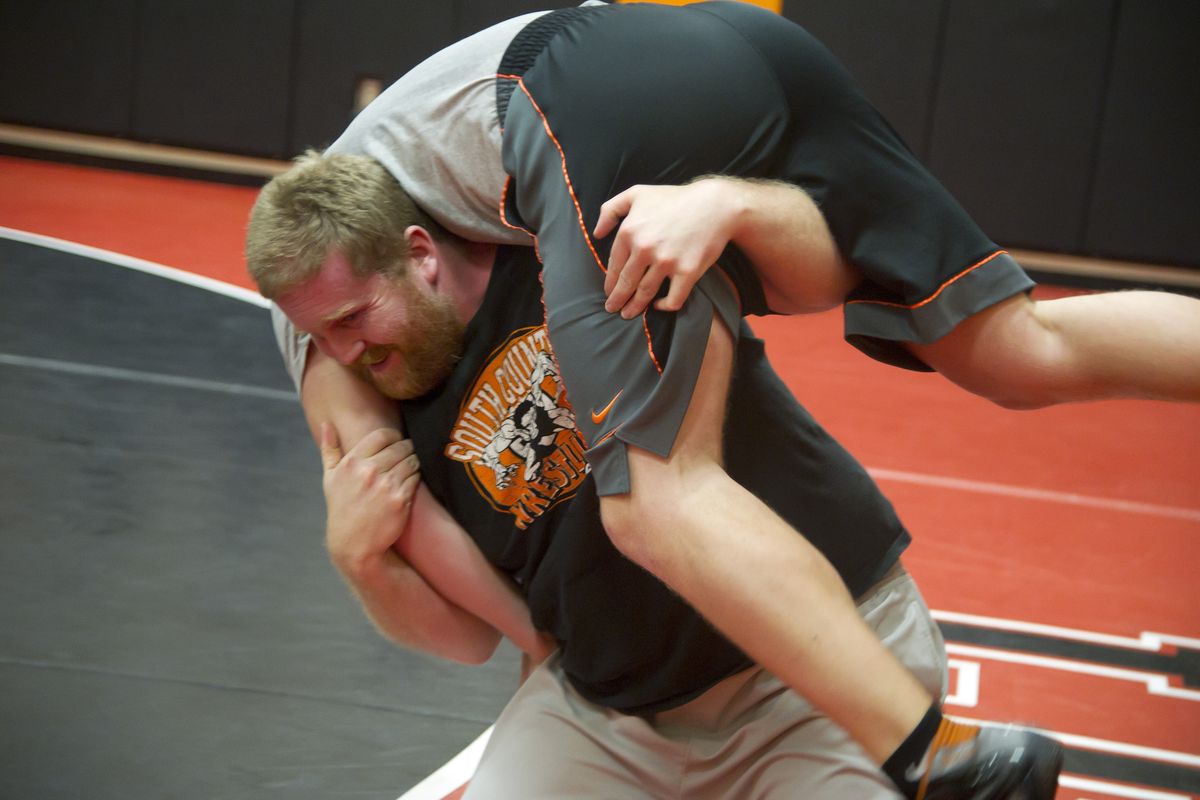Most local prep wrestling coaches oppose new weight divisions

At least one coach defies current sentiment when it comes to the new weight classes for high school wrestlers this year.
Lewis and Clark second-year coach Mat Orndorff embraces the changes, but most hate them.
Washington and Idaho have adopted the National Federation of State High School Associations (NFHS) model resulting from a study that sought to equalize the percentage of wrestlers per weight class.
They are based on the National Wrestling Coaches Association’s Optimal Performance Calculator, by which hydration and body-fat testing already required of each school helps to determine the lowest weight in which a wrestler can, for health reasons, compete.
“The change … resulted from a three- to four-year process,” NFHS Wrestling Rules Committee chair Dale Pleiman said in a press release. “The rules committee was able to analyze data from almost 200,000 wrestlers across the country with the goal to have weight classes that have approximately 7 percent of the wrestlers in each.”
Many area wrestling coach disagree. They believe it penalizes the low middle weights, where most of their wrestlers are concentrated.
Not Orndorff, however. The NCAA fourth-place heavyweight from Oregon State University admits that part of his reasoning is because he is a heavier guy.
He pointed to State 3A runner-up University, which was powered by upper-weight competitors mentored by his brother, Titans assistant Dave Orndorff, also an NCAA heavyweight runner-up. The Titans had champions at 189 and 215 pounds and a second-place finisher at 171 last year.
“The reason I think (the new weights) are good is because 7 percent seems fair to me,” Mat Orndorff said. “I understand some coaches will say the best (and more numerous) wrestlers are between 125 and 150 pounds. I don’t know if year to year you can say that’s correct. I think it will change as coaches recruit the new classes a little more.”
Speaking for the dissenters is North Central coach Luke Leifer, a 118-pound college wrestler who understandably admits bias in favor of the little guy.
“It’s true we look at it differently than a heavyweight,” he said. “We favor little kids more.”
Leifer’s argument is that the study determining weight class changes is flawed. He said the early-season certification doesn’t take into account the number of wrestlers who drop out as the season progresses.
“When they are certified on the roster, you can’t delete them,” Leifer said. “I think there should have been a way to eliminate the kids who leave.”
He said they are typically in the heavier weights at NC.
Several coaches join Leifer in opposing the change.
Titans coach Don Owen said that adding another upper weight is a mistake.
“It comes at the expense of the lower and middle weights, which are always filled,” he said.
Don’s brother Tim, head coach at Ferris, agrees.
“It is much harder to recruit an upper weight (wrestler) where they added, and easier to find one in the middle, where they deleted,” he said.
Sandpoint coach Mike Randles worded those concerns in an email. He blasted the new weights (and a 98-pound addition in Idaho that he termed “ridiculous”).
“Remember when your dad said to you, ‘If your friend jumped off a bridge, would you?’ Well, Idaho would,” Randles wrote. “At least the Idaho High School Athletic Association did when it embraced the (NFHS) new weight classes. (It is) a change that completely defies logic.”
East Valley coach Craig Hanson is in the middle.
“The new weights are not really great for us this year, but then again, not bad either – just new,” he said. “It just depends on the year. Everybody will adjust.”
It can be argued that in past years, under the old formula a worthy wrestler in a talented lower- or middle-weight bracket got left out of state anyway.
But no matter how a coach views this year’s weight class changes, they have certainly been the topic of discussion.
| New | Old |
| 106 | 103 |
| 113 | 112 |
| 119 | 120 |
| 126 | 125 |
| 132 | 130 |
| 138 | 135 |
| | |
| | |
| | |
| | |
| | |
| 195 | 189 |
| 220 | 215 |
| 285 | 285 |